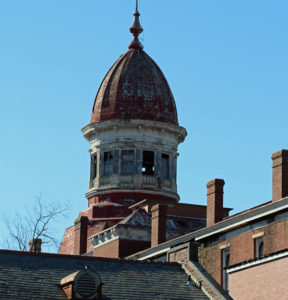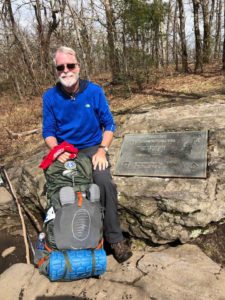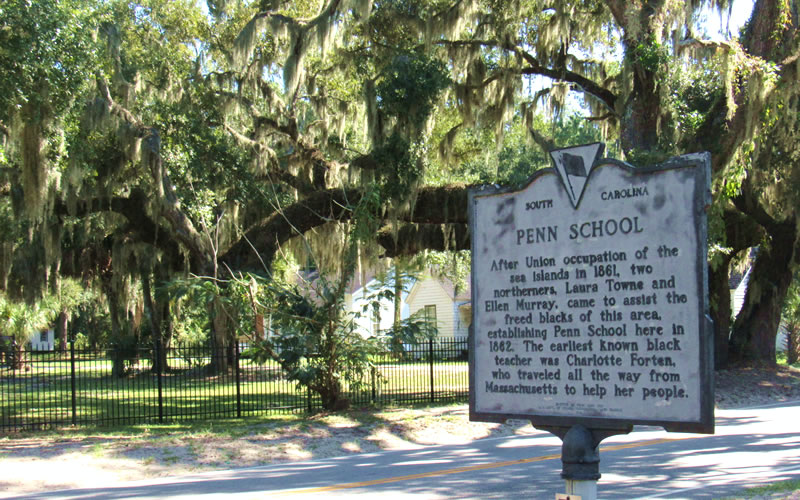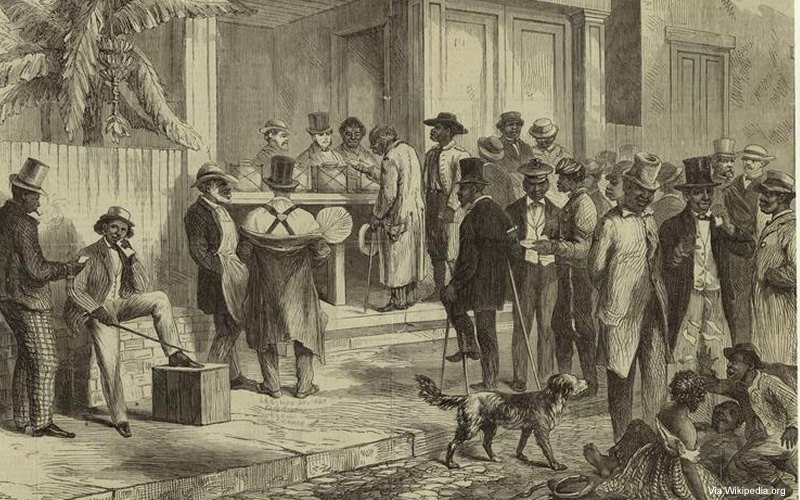BEAUTIFUL FLOWER: West Ashley photographer Cynthia Bledsoe stepped out into her backyard recently and found this beautiful, white camellia in bloom. It’s about the most perfectly symmetrical flower we’ve ever seen. She believes it to be Nuccio’s Gem Camellia. Anybody disagree? Thanks, Cynthia.
IN THIS EDITION FOCUS: Headed out to hike the Appalachian Trail … again
FOCUS: Headed out to hike the Appalachian Trail … again
COMMENTARY, Brack: Beaufort to become national hub of Reconstruction history
IN THE SPOTLIGHT: South Carolina Ports Authority
REAL ESTATE: What you need to know about maintenance of your home
GOOD NEWS: New director hired for public library system
FEEDBACK: Palm’s right on the money about folly of I-526 extension
MYSTERY PHOTO: There’s a big clue in this photo mystery
S.C. ENCYCLOPEDIA: Reconstruction (part 1 of 2)
CALENDAR: Columbia Ballet to stage production based on Green’s paintings
ADAMS: Headed out to hike the Appalachian Trail … again
Editor’s Note: It’s always been our dream to hike the Appalachian Trail. (No Mark Sanford jokes, please.) But South Carolina’s Jerry Adams, a former newspaper reporter, television personality and school district spokesman, is headed out to do it again. In the weeks ahead, we’ll feature commentary periodically about this trip by the grasshopper (that’s Jerry’s “trail name”) and you can live vicariously through his travels.
By Jerry Adams, March 2, 2019 | Tonight I camp atop Springer Mountain in Georgia. Tomorrow, I begin the Long Walk to Maine, a 2,192-mile backpacking adventure. Again
The “why” of the whole thing has been rattling around in my 68-year-old brain since I decided three months ago that another backpacking trip from Georgia to Maine was absolutely the right thing to do. So it begins…
A schoolmarm friend wrote Tuesday asking me how her fifth-graders could follow me on the trail. They wanted to send me messages and hear about my travels. They wanted to know why I was doing this.
Great question. Yes, it’s about five million steps from Georgia to Maine, but that’s the attraction – a wonderful journey through winter, spring and summer, and across 14 states. It’s not the impossible dream.
Short answer. It’s because I am blessed and because I can – or believe that I can. Why? Why not!
Eight years ago, I left Springer in April and capped a remarkable six-month adventure by hitchhiking home from Maine to Mount Pleasant. I worked the next five summers as an AT Ridgerunner, spending five days a week in the forests of New Jersey, keeping an eye on the trail community and helping out where needed. Between 2011 and 2016, I spent six seasons in the woods, hiked about 3,000 miles and spent about a year’s worth of nights sleeping in a tent.
Simply put, it’s in my blood. As John Muir put it, “The mountains are calling, and I must go.”
The Appalachian Trail has also been the canvas for a remarkable spiritual journey.
“Patience, grasshopper. And trust in the Lord thy God.” That is my mantra, and I hike (and live a wonderful life) thanks to his Amazing Grace and in thanks for His forgiveness and sacrifice. That’s the Good News that continues to inspire me, and, I hope, to live my life in a loving way that helps and inspires others. I leave Springer on Sunday, thanks to His saving Grace and knowing that He walks with me every step of the way.
The drudgery of life was getting to me last fall. After 18 steady and enjoyable months of retail sales at Dillard’s, I needed and began praying on the idea of another Appalachian Trail hike.
The idea also pleased my doctor (happily.) He told me at my physical last fall that I looked great and that it looked like I had turned back the calendar 10 years. Wow.
So, I thank the Lord for the way the dream has played out. To do the hike meant giving up my job and my apartment in Charleston, putting possessions in storage and finding a home for my cat, Missy. In October, I drove 200 miles to Pendleton with my friend, Lewrie, to help him scout his possible move to a farmhouse here. What worked for him also worked for me. He moved here in January, and I followed a month later, bringing Missy along and living happily here as I make final preparations for the hike.
Final preparations. Also known as “getting my affairs in order.” Hmmm, that has an ominous ring to it, doesn’t it? So many people dream of adventures, but can’t quite yet for all those “life” reasons. So many others have their own struggles and look for reasons to just walk around the block; more still seem to have just given up.
I am inspired by many. And I realize that my long walk will inspire others. I also realize that life – like the Appalachian Trail – has its ups and downs, just like mountain footpaths. It’s really hard sometimes, but I know that if you believe in yourself and press on, you’ll find that the valleys and the mountains are equally amazing. Oh, and remember to breathe in, breathe out. Repeat. And look up and around; not at your phone.
Lewrie inspires me. His love for the Lord and work in His name has helped me and thousands of others. Pushing 80, he is still steeped in Bible study and in helping others serve God. He helped lead me to the Lord and he is now being reinvigorated by renewing old friendships and leading others to love the Lord.
I’m also inspired by so many folks my age and older that I’ve met while working retail. Folks in their 80s and even 90s are still strong and active, happily walking the mall and loving life.
And, of course, I am awed by my brothers at Mepkin Abbey, including friends who dedicated their lives to the Lord before I was born and give their all to the monastic life. I’m hiking for Brother Vincent and Brother Joseph, two of many whom I love and who are sources of daily inspiration. My 40 days with the brothers in 2012 was as difficult and remarkable as my six months in the woods in 2011.
So how to I ‘splain myself to a class of 5th graders? What do I tell them?
I’m doing this because I dream big and believe in myself, even when it isn’t easy. Keep dreaming and believing in yourself and others. Work hard, remember to breathe, love others as you want to be loved. Oh, and honor your father and mother.
A few summers ago, I camped with a group of middle-schoolers and their teachers. They were out on a wilderness weekend “graduation” hike for their school, which has an environmental curriculum. I marveled at their teamwork as they worked together to set up their tents and get ready for dinner.
Their “reward”? They would get to lead kindergarten kids on a day hike, sharing the outdoors with younger boys and girls. They all are learning to love and respect the outdoors, and that’s a wonderful thing. Happy Trails. I’m going hiking.
You can keep up with Jerry’s exploits on Facebook here or on his blog at https://at-grasshopper.com/
- Have a comment? Send to: editor@charlestoncurrents.com
BRACK: Beaufort to become national hub of Reconstruction history
By Andy Brack, editor and publisher | Sandwiched between the Southern stains of slavery and oppressive Jim Crow laws were a few years of mostly forgotten history, the Reconstruction era.
 In the months ahead, the Beaufort area is poised to become the nation’s hub for rediscovering and understanding the promise of Reconstruction to newly-freed slaves as they started to engage in America by voting, buying land and living in freedom.
In the months ahead, the Beaufort area is poised to become the nation’s hub for rediscovering and understanding the promise of Reconstruction to newly-freed slaves as they started to engage in America by voting, buying land and living in freedom.
A recently-passed massive public lands bill that pumps millions of dollars into land and water conservation projects across the nation will have a transformational impact on Beaufort and the state: It will give South Carolina its second national park, the Reconstruction Era National Park. The bill is awaiting a presidential signature.
Hundreds of thousands of Americans annually will visit the new park as well as Beaufort, Port Royal and St. Helena Island to witness what some call the nation’s second founding as formerly enslaved African Americans became citizens. The park, named a national monument just two years ago as President Barack Obama left office, will fuel economic growth in the region as visitors explore what Reconstruction actually meant mostly in the days after the Civil War.
Beaufort Mayor Billy Keyserling, central champion of efforts to establish the national park, says Beaufort is recognized as the best place to share the full story of Reconstruction because it started earlier – in 1861 when white planters abandoned St. Helena Island after Union forces captured the area – and ended later than other parts of the country.
“One hundred and fifty years have gone by and no one has talked about a period of history where people were freed from enslavement, granted birthright citizenship and given the right to vote,” he said in an exclusive interview about changes coming to the region.
“Historians with the National Park Service found that Beaufort had the most complete story [about Reconstruction] because buildings were not burned, people were not killed, the white planters abandoned the land and there was a vacuum of power” filled by newly-free black Americans governing and participating in democracy. Beaufort, he said, fulfilled a dream of telling the important story of Reconstruction more than any other place.
That’s relevant today because the three constitutional amendments passed after the Civil War – the 13th, 14th and 15th – continue to be part of the national debate. The 13th Amendment abolished slavery, a shameful part of the past that still muddies the current political and social climate of the South. The 14th Amendment established birthright citizenship, which has been challenged by the political right in debates about immigration. The 15th Amendment originally gave African American men the right to vote, a right under assault still by those who want to make it harder, not easier, for some Americans to vote.
The Beaufort park’s embrace of Reconstruction history will add context and help many Americans better understand the freedoms they have.

Pictured above is a hand-colored 1863 image (Frank Leslie’s illustrated newspaper) of the Emancipation Day celebration on Jan. 1, 1863, under a grove of oaks outside Camp Saxton along the Beaufort River. Columbia filmmaker and Charleston native Bud Ferillo, who provided the engraved image, tells us that celebration of the first Emancipation Day was the largest in the South of freedmen when sine 3,000 people attended. Today, the location is home to Naval Hospital Beaufort.
The new Reconstruction Era National Park will be anchored by four areas but will include 100 sites around Beaufort County. Anchor sites include the Brick Church, a church built by slaves, abandoned by planters and kept going by freed blacks. Then there’s the Penn Center, first a school for freed blacks that today continues as a community connector. Also important are the old firehouse on Scott Street in Beaufort, which will serve as the park’s visitor’s center, and the site of the former Camp Saxton, now the naval hospital. It’s where the largest single group of freed slaves gathered in 1863 for a reading of the Emancipation Proclamation.
“History helps unlock the unknown for many people’s sources for racial animosity that we now are living with it unnecessarily,” said Columbia leader Bud Ferillo, who has worked with Keyserling to move the park forward.
In the months ahead, Beaufort will change and help provide a better understanding of American history. To keep its community integrity, it will need to learn over-development lessons from places like Williamsburg and Charleston.
“We’re out looking for money to make Beaufort the center of education to tell the untold stories and correct the mistold stories of a period of history that essentially very few people have even heard about,” Keyserling said.
- To learn more about Beaufort’s crucial role in history and to keep up with developments, go to: ReconstructionBeaufort.org.
EDITOR’S NOTE: We learned Friday after this column originally was published that U.S. Rep. Jim Clyburn, D-S.C., a key player in pushing through federal legislation for the park, will have a press conference 11 a.m. today at Zion Baptist Church in Columbia to talk about the new park and its enabling legislation.
- Have a comment? Send to: editor@charlestoncurrents.com
SPOTLIGHT: South Carolina Ports Authority
 Founded in 1942, the South Carolina Ports Authority (SCPA) owns and operates public marine terminals at two port facilities, the Port of Charleston and the Port of Georgetown, in addition to inland ports in Greer and Dillon, S.C. These facilities are owner-operated terminals, meaning the SCPA owns the terminals, operates all container cranes, manages and operates all container storage yards and leads all customer service functions in both the yard and the lanes.
Founded in 1942, the South Carolina Ports Authority (SCPA) owns and operates public marine terminals at two port facilities, the Port of Charleston and the Port of Georgetown, in addition to inland ports in Greer and Dillon, S.C. These facilities are owner-operated terminals, meaning the SCPA owns the terminals, operates all container cranes, manages and operates all container storage yards and leads all customer service functions in both the yard and the lanes.
SCPA promotes, develops and facilitates waterborne commerce to meet the current and future needs of its customers, and for the economic benefit of the citizens and businesses of South Carolina. In fact, SCPA facilities in Charleston, Dillon, Georgetown and Greer drive $53 billion in annual statewide economic impact and 1 in every 11 SC jobs is attributed to the Port.
- For more information, visit www.scspa.com.
- To meet all of our underwriters, click here.
- To meet all of our underwriters, click here.
What you need to know about maintenance of your home
Via Digit Matheny, contributing editor | Many homeowners don’t think about home maintenance until something breaks, but that’s not the best way to take care of your home. Whether you’re a new homeowner or have been settled for years, it’s never too late to cultivate some home maintenance habits. Here are three tips to help you protect your investment and keep your property in good shape for years to come:
Create and follow a home maintenance schedule
A good place to start is by following a home maintenance schedule. Just as your car needs to have an oil change, your home and yard will need some regular maintenance. Home maintenance schedule apps such as HomeZada and Centriq are an easy way to get yourself on track.
You’ll need to mow your lawn, clean your gutters and perhaps even top your trees from time to time. For pest control, you may need to spray or have ground treatment performed a few times a year, too. When it comes to appliances, make sure to send in any warranties and follow the maintenance recommendations in your owner’s manual. For older appliances, many documents can be found online.
Don’t be afraid to do some research and speak with professionals about maintenance specific to your location.
Have all of your home systems checked regularly
It’s important to get your electrical, plumbing and HVAC systems checked annually to keep them in good shape. Some of these tasks can be done yourself; for instance, you might need to clean your air filters, remove debris from the vents and flush out your water heater.
For more technical inspections, check customer reviews on Yelp, Angie’s List, Google, Facebook and the BBB when searching for a new company. Always go with one that is experienced, licensed, bonded and insured.
Follow a cleaning schedule
Home maintenance often focuses on repair work, but keeping your home clean can be just as important. In addition to once a week tasks such as vacuuming and dusting the shelves, deep cleaning every month or so can save you big in the long run. Moving furniture around, pulling out the washer and dryer to clean behind them and clearing out the garage gives you a chance to inspect for pest problems, water damage and similar issues that can quickly escalate into expensive repairs.
Being a homeowner is very rewarding on many levels, but homeownership comes with a great deal of responsibility. As long as you put in some effort on a regular basis, you should have no problem keeping your home in good repair.
Digit Matheny is a local Realtor with Carolina One. You can learn more about his business at this website.
Charlotte leader to be Charleston library’s next executive director
Staff reports | Angela Craig, a regional library leader who manages two major Charlotte libraries, will be Charleston County Public Library’s new executive director, the library’s Board of Trustees announced recently.
“Angela is the perfect fit for leading efforts to continue the tremendous forward trajectory that the Charleston County Public Library has been on in recent years,” said Andy Brack, chair of the library’s Board of Trustees. “With her broad experience in managing significant libraries and a major building program in Charlotte – plus her years of work of providing innovative services – Angela has the talent and experience to guide our staff and system in the days ahead as we soon open five new libraries and renovate others.”
Craig, 39, is stepping down as Center City leader for Charlotte Mecklenburg Library (CML), a system in Charlotte, N.C., with a $40 million annual budget and 20 library locations. She will start her new position in Charleston County by May 1. The Center City leader is equivalent of the system’s deputy director.
“It is a tremendous honor to be selected as the next executive director of the Charleston County Public Library,” Craig said this morning after the board voted to hire her. “I am excited to be part of such a dynamic and dedicated staff and historic community that loves and values their libraries. The future is bright for libraries and we have great things ahead of us at Charleston County.”
Craig was one of four finalists who were interviewed by the board this month after a national search by an executive recruitment firm that specializes in locating the best and brightest from the world of libraries. The new director will lead the system’s continuing efforts to bolster customer service for library users as well as grow virtual services, overhaul technologies, create innovative content, and build sustainable partnerships with businesses and community organizations.
Craig also will continue ongoing efforts to finish the library’s voter-approved $108.5 million building and renovation program, which includes constructing five new libraries (two new branches and three replacements), renovating 13 existing branches and relocating support staff out of the main library to free up space for public use. Currently four new library buildings are under construction and another is in design. More information
Also in Good News:
![]() Women leaders to be honored. Six area leaders will be honored noon March 7 with the Trident Literacy Pat Gibson Founder’s Award at the organization’s Founder’s Award Luncheon. The ceremony, which is during International Women’s Month, will be held at Founders Hall at Charles Towne Landing, 1500 Old Towne Road, West Ashley. Honorees include: Brenda Carter, a member of the S.C. Tennis Hall of Fame; Dot Scott, president of the Charleston chapter of the NAACP; Giovanna De Luca, a College of Charleston professor who is founder and artistic director of the Nuovo Cinema Italiano Film Festival; Jennet Robinson Alterman, a longtime women’s rights advocate who currently chairs the S.C. Women’s Rights and Empowerment Network; award-winning, nationally-known cookbook author and chef Nathalie Dupree; and MUSC nursing professor Deb Williamson. More info.
Women leaders to be honored. Six area leaders will be honored noon March 7 with the Trident Literacy Pat Gibson Founder’s Award at the organization’s Founder’s Award Luncheon. The ceremony, which is during International Women’s Month, will be held at Founders Hall at Charles Towne Landing, 1500 Old Towne Road, West Ashley. Honorees include: Brenda Carter, a member of the S.C. Tennis Hall of Fame; Dot Scott, president of the Charleston chapter of the NAACP; Giovanna De Luca, a College of Charleston professor who is founder and artistic director of the Nuovo Cinema Italiano Film Festival; Jennet Robinson Alterman, a longtime women’s rights advocate who currently chairs the S.C. Women’s Rights and Empowerment Network; award-winning, nationally-known cookbook author and chef Nathalie Dupree; and MUSC nursing professor Deb Williamson. More info.
Great big gift. Hats off to the Church of Jesus Christ of Latter-Day Saints for its generous $2 million donation to the International African American Museum Center for Family History. Former Charleston Mayor Joseph P. Riley Jr. said in a press release, ““One of the crown jewels of the experience at the museum will be the Center for Family History. Because of this generous donation from The Church of Jesus Christ of Latter-day Saints, the center will catapult into a level of excellence that simply would not be achievable.”
New members. Congratulations to four new members of The Citadel’s Board of Visitors: Three of the new members — A. Sean Alford, superintendent of Aiken County Public School district; Maj. Gen. R. Van McCarty, South Carolina’s adjutant general; and James E. Nicholson Jr., general manager of sales in gas operations for SCE&G/Dominion Energy — are now active members of the board. A fourth board member, Robert E. Lyon Jr., will begin serving July 1. Lyon, an attorney, is deputy executive director of the S.C. Association of Counties.
Palm’s right on the money about folly of I-526 extension
To the editor:
![]() Fred Palm’s article on 526 was a wonder to behold. At last, someone is taking an honest look at 526’s finances. This boondoggle, as designed, does not pass the smell test. One reason it’s so costly is that the county failed to protect a right-of-way, so the route includes essentially a four-mile bridge across the Stono River marsh – the most expensive way to build, and a route which will destroy the marsh, with disastrous environmental consequences. And since all that money was spent on a four-mile bridge, James Island gets no elevation at all. Instead, the island will be cut in half by a four-lane highway.
Fred Palm’s article on 526 was a wonder to behold. At last, someone is taking an honest look at 526’s finances. This boondoggle, as designed, does not pass the smell test. One reason it’s so costly is that the county failed to protect a right-of-way, so the route includes essentially a four-mile bridge across the Stono River marsh – the most expensive way to build, and a route which will destroy the marsh, with disastrous environmental consequences. And since all that money was spent on a four-mile bridge, James Island gets no elevation at all. Instead, the island will be cut in half by a four-lane highway.
The county council is grotesquely irresponsible about investments like 526. The awful story of the Navy Hospital is another example. It was bought for an outrageous $33 million with plans to renovate it – plans apparently built on pipedreams, without benefit of thorough inspection. Now it turns out the building cannot be renovated and has to be torn down at a cost of $6 million. Any home buyer who bought a house without a thorough inspection would be labelled irresponsible and naïve.
It’s time we held county council accountable at the ballot box.
— Susan Breslin, Folly Beach, S.C.
Tell us what you think
We’d love to get your impact in one or more ways:
Send us a letter: We love hearing from readers. Comments are limited to 250 words or less. Please include your name and contact information. Send your letters to: editor@charlestoncurrents.com. | Read our feedback policy.
Tell us what you love about the Lowcountry. Send a short comment – 100 words to 150 words – that describes something you really enjoy about the Lowcountry. It can be big or small. It can be a place, a thing or something you see. It might the bakery where you get a morning croissant or a business or government entity doing a good job. We’ll highlight your entry in a coming issue of Charleston Currents. We look forward to hearing from you.
MYSTERY: There’s a big clue in this photo mystery
There’s a giveaway clue in this photo, but you’ll have to look closely. Send your guess to feedback@statehousereport.com. And don’t forget to include your name and the town in which you live.
Our previous Mystery Photo
Our Feb. 25 mystery, “Top of building shows wear and tear,” was a photo submitted by loyal reader Bill Segars of Hartsville. It shows the top of the old Babcock Building at the former S.C. State Hospital in Columbia, or what some readers called the old Bull Street lunatic asylum!
Congratulations to all photo detectives who correctly identified this mystery: Beth McGuire and Rebecca Davis, both of Charleston; Chris Brooks of Mount Pleasant; George Graf of Palmyra, Va.; and Boykin Beard of Camden.
Segars said he did some research that turned up some interesting facts about the Greek Revival building:
- Establishment note: South Carolina State Legislature approved $30,000 to build the S.C. Lunatic Asylum and school for the deaf and dumb. This legislation made South Carolina the second state in the nation (after Virginia) to provide funds for the care and treatment of people with mental illnesses.
- Built: 1858-1885
- Size: 350,000+ sq. ft.
- Exterior material: Brick
- Known exterior changes: Additions 1876 (balance of south wing), 1882 (entire north wing), 1885 (center section) & renovation & additions 1920, renovations 1949, 1962, 1969, 1974
- Note: Name for Dr. James W. Babcock in 1969, superintendent 1891-1914
Graf provided more context: “According to palmettoweekend.com: Built between 1822 and 1827, the Babcock Building was the South Carolina Lunatic Asylum housing and treating the state’s mentally ill for nearly 200 years. The last of the asylum’s patients were removed in 1990 and the site was completely abandoned in 1996, the elements have worn away at the looming structure. Once a city within a city, the 181- acre asylum property is in the process of rebirth. Just next-door to the Babcock building the Columbia Fireflies now play baseball, tech companies are moving in, a church has plans to move into the properties former power station.”
Send us a mystery: If you have a photo that you believe will stump readers, send it along (but make sure to tell us what it is because it may stump us too!) Send it along to editor@charlestoncurrents.com.
HISTORY: Reconstruction
S.C. Encyclopedia, Part 1 of 2 | The final defeat of the Confederacy in 1865 brought an important and difficult problem for the federal government: how were the defeated states to be brought back into the Union? Most agreed that this should be accomplished as rapidly as possible, but not so rapidly that the planter elite that had led the South in secession would be able to renew the rebellion or reverse the results of the war. The South would have to remain under federal control until it was deemed safe to leave matters to the southern state governments. This probationary period of federal control was termed “Reconstruction.” To some contemporaries, the reconstruction of the Union was complete, and Reconstruction ended when the South’s representatives were readmitted to Congress in 1868.
In modern parlance, however, the period of President Andrew Johnson’s control of the process of readmission is termed “provisional Reconstruction” or “Presidential Reconstruction.” The following period, marked by the control of southern policy by Congress, is termed “Congressional Reconstruction” or “Radical Reconstruction,” after the Radical Republicans who dominated Congress. The duration of the Reconstruction period varied among southern states, depending on when they were readmitted to the Union by Congress, or when they reestablished Democratic rule. In South Carolina, Reconstruction lasted from 1865 to 1877, with the break between Presidential and Congressional control occurring in 1867 when the freedmen were registered to vote for delegates to a constitutional convention.
President Johnson’s plan for Reconstruction would have left the antebellum elite in control of the southern states and would not have included black suffrage. It did, however, require that southern whites accept the results of the war—in particular the abolition of slavery. The plan did not sit well with Republicans in Congress, who considered it too lenient. Northerners blamed the war on southern planters, who used their control of black labor to control their states. In a serious miscalculation of northern sentiment, southern leaders passed Black Codes, laws restricting the activities and occupations of African Americans and remanding them to the control of their former owners.
South Carolina’s code, enacted in December 1865, was typical: there were stringent regulations on work and travel that applied only to African Americans and a system of courts that tried only African Americans. The Black Codes were invalidated by the state’s military governor, who saw them as reestablishing slavery in everything but name. South Carolinians then lost their last chance to avoid Congressional Reconstruction by refusing to ratify the Fourteenth Amendment, which among other provisions would have made African Americans citizens of the state and punished the state if it did not give them the vote.
Congressional Republicans capitalized on northern outrage in 1867 by passing the Reconstruction Acts, which mandated the registration of all adult males in the South as voters and the holding of elections for delegates to a constitutional convention. In South Carolina, of 124 delegates to the 1868 convention, 73 were black or of mixed ancestry, and all were Republicans. The constitution they wrote was modeled on those of northern states on matters such as local government, women’s rights, and public education, but it surpassed them in its commitment to racial equality. It extended voting rights to all men; proposals to limit voting to the literate, the educated, or those who paid a poll tax were all voted down overwhelmingly.
Under the new constitution the state’s African Americans, who comprised sixty percent of the voting population, had the voting strength to ensure Republican control of the state government. This domination allowed the passage of more legislation to improve the condition of the freedmen than was accomplished in any other state. An example was the creation in 1869 of the South Carolina Land Commission, an institution unique to the state, whose purpose was to make landownership possible for poor blacks.
Unfortunately, one-party domination also led to a lack of accountability on the part of many Republican officeholders. Corruption flourished in the state legislature and in the executive offices of the state. In one instance in 1870–1871, the state’s financial board secured the authority to print and sell $1 million in state bonds; there were to be $1,000 bonds numbered 1 to 1,000. Members of the board printed two sets— both numbered 1 to 1,000—and sold both sets. They kept no records of their transactions and were caught only when a New York investment firm came into possession of two bonds with the same number on both. Partly as a result of such malfeasance, and partly because of legitimate increases in expenditures such as the creation of a public school system from scratch, state budgets skyrocketed during Reconstruction and the state slipped further and further into debt.
- To be continued in the next issue …
— Excerpted from an entry by Hyman S. Rubin III. This entry may not have been updated since 2006. To read more about this or 2,000 other entries about South Carolina, check out The South Carolina Encyclopedia, published in 2006 by USC Press. (Information used by permission.)
CALENDAR: Columbia Ballet to offer March 15 dance based on Green’s art
Staff reports | The Columbia City Ballet is gearing up to bring back its one-of-a-kind ballet, Off the Wall and Onto the Stage: Dancing the Art of Jonathan Green. Deemed “fabulous…an ingenious idea…striking” by The New York Times, the dance brings Green’s Gullah-inspired paintings to life through creative choreography and innovative sets.
The piece will be presented for one night only at the Township Auditorium on March 15, 2019 at 7:30 p.m. Off the Wall and Onto the Stage: Dancing the Art of Jonathan Green was created in 2005 after the Ballet’s artistic and executive director, William Starrett, and Green met at the S.C. Arts Commission’s Elizabeth O’Neill Verner Awards ceremony. With a mutual admiration of each other’s work they collaborated to bring Green’s paintings to life through dance.
“It is my sincere hope that the choreography will leave the viewer with the same exhilaration, joy and renewed faith in humanity that I found creating this ballet,” Starrett said about the piece.
Green is the first known artist of Gullah heritage to receive formal training at the Art Institute of Chicago. With more than 1,700 works, Green is internationally known for his vibrant colorful art depicting the Gullah culture in South Carolina’s Lowcountry.
“I wanted to go back to my roots…the older people were dying, and I began to see [the Gullahs] differently. I saw them as a people with a strong link, probably the strongest link with Africa of any of the black American people,” Green said in a press release. It is this harmonious union of cultural traditions and deep spirituality which Starrett translates into the art of ballet, the release said. More info: Tickets range from $2 to $49 each and are available online at www.thetownship.org.
Events at the Gaillard. Check out these awesome coming events at the Charleston Gaillard Center, 95 Calhoun St., Charleston:
March 4, 8 p.m.: Joe Bonamassa
March 8, 7 p.m.: Black Violin
March 9, 2 p.m.; March 10, 5:30 p.m.: American Girl Live
March 14, 7:30 p.m.: Masquerade with Dimitri Pittas, Leah Edwards and the Charleston Symphony Orchestra
Ribbon cutting: 12:30 p.m., March 5, Louis Waring Jr. Senior Center, Bon Secours St. Francis Hospital, 2001 Henry Tecklenburg Dr., West Ashley. Charleston Mayor John Tecklenburg and other officials will lead a grand opening of the new center named for former council member Louis Waring Jr. Tours will follow.
Steel Magnolias: 12 shows, March 6 to March 24, Dock Street Theater, 135 Church St., Charleston. Charleston Stage will present Steel Magnolias, one of the most produced comedies in America, for three weeks with resident actors to the delight of area audiences. Truvy, Ouiser, Clairee, M’Lynn, Annelle, and Shelby have gathered once again at Truvy’s Beauty Parlor to primp, gossip, and spar with one another. As hair is teased, blow-dried, and permed, the comic sparks fly in this hilarious and beloved classic Southern comedy. Tickets available online 24/7 at www.charlestonstage.com. Or by calling (843) 577-7183.
Medway Movie Night: 5:30 p.m. to 8:30 p.m., March 8, Medway Park and Community Garden, 2069 Medway Road, James Island. The Charleston Park Conservancy will offer a free movie, “A Bug’s Life” at dark with food trucks offering food for purchase. More.
The Reckoning in the Park: 2 p.m. and 4 p.m. sets, March 10, Dog Park, James Island County Park, James Island. Bring your favorite furry friend to the dog park to enjoy live music from local Grateful Dead cover band, The Reckoning! Fee: $2 park entrance. More: www.charlestoncountyparks.com
Great jazz: 7:30 p.m., March 11, Recital Hall, Simons Center for the Arts, 54 St. Philip St., Charleston. The 2nd Monday Series at the College of Charleston School of the Arts will present the CofC Faculty Jazz Ensemble: Robert Lewis (saxophones), David Heywood (flute), Tyler Ross (guitar), Gerald Gregory (piano), Quentin Baxter (drums) and Frank Duvall (bass). The group will perform jazz standards, arrangements and originals. Directed by Robert Lewis, Jazz Studies in the College’s Department of Music is one of the most prominent music programs in the area and includes instruction by some of the best jazz performers of the South. Admission is $15 general / $10 students. More information is available at music.cofc.edu/concerts/2nd-Monday-series.
Colour of Music Festival: March 27 to March 30 at three locations in downtown Charleston. This year’s festival will showcase leading black classical artists from France, Britain, Colombia, and the Caribbean and highlighting the musical achievements of lesser known black female composers including Florence B. Price. Tickets are $15 to $45/ Click here to see schedule and learn more about ticketing.
The City Luminous exhibition: March 30 to May 5, City Gallery, 34 Prioleau Street, Joe Riley Waterfront Park, Charleston. The City of Charleston Office of Cultural Affairs will present The City Luminous: Architectures of Hope in an Age of Fear. Curated by the two College of Charleston professors, the exhibition assembles architectural installations and images designed to suggest a hopeful way forward for the world’s fractured communities.
Lowcountry Cajun Festival: Noon to 6 p.m., April 7, James Island County Park, James Island. The 28th annual festival returns with a full day of Zydeco music, authentic Cajun and Creole food, children’s activities and more! Charleston’s best Cajun restaurants, caterers and food trucks will cook up a variety of delicious foods. For a band line-up and more, visit: CharlestonCountyParks.com.
Early morning bird walks at Caw Caw: 8:30 a.m. every Wednesday and Saturday, Caw Caw Interpretive Center, Ravenel. You can learn about habitats and birds, butterflies and other organisms in this two-hour session. Registration not required, but participants are to be 15 and up. $10 per person or free to Gold Pass holders. More: http://www.CharlestonCountyParks.com.
AREA FARMERS MARKETS
SATURDAYS: Johns Island Farmers Market operates each Saturday from 9:30 a.m. to 1:30 p.m. year-round with more than 50 local farmers and vendors, food trucks, music and more. The market is located on the campus of Charleston Collegiate School, 2024 Academy Road, Johns Island.
- If you have an event to list on our calendar, please send it to feedback@charlestoncurrents.com for consideration. The calendar is updated weekly on Mondays.
If you like what you’ve been reading, how about considering a contribution so that we can continue to providing you with good news about Charleston and the Lowcountry. Interested? Just click the image below.
OUR UNDERWRITERS
Charleston Currents is an underwriter-supported weekly online journal of good news about the Charleston area and Lowcountry of South Carolina.
- Meet our underwriters
- To learn more about how your organization or business can benefit, click here to contact us. Or give us a holler on the phone at: 843.670.3996.
OUR TEAM
Charleston Currents offers insightful community comment and good news on events each week. It cuts through the information clutter to offer the best of what’s happening locally.
- Mailing address: P.O. Box. 22261 | Charleston, SC 29413
- Phone: 843.670.3996
Charleston Currents is provided to you weekly by:
- Editor and publisher: Andy Brack, 843.670.3996
- Contributing editor, common good, Fred Palm
- Contributing editor, money: Kyra Morris
- Contributing editor, Palmetto Poem: Marjory Wentworth
- Contributing editor, real estate: Digit Matheny
SUBSCRIBE FOR FREE
Subscriptions to Charleston Currents are free.
- Click here to subscribe.
- Unsubscribe. We don’t want to lose you as a reader of Charleston Currents, but if you must unsubscribe, you will have to do it through the email edition you receive. Just go to the bottom of any of your weekly newsletters and click the “unsubscribe” function. If that doesn’t work, please send us an email with the word “unsubscribe” in the subject line.
© 2008-2019, Statehouse Report, LLC. All rights reserved. Charleston Currents is published every Monday by Statehouse Report LLC, PO Box 22261, Charleston, SC 29413.















 We Can Do Better, South Carolina!
We Can Do Better, South Carolina!
























